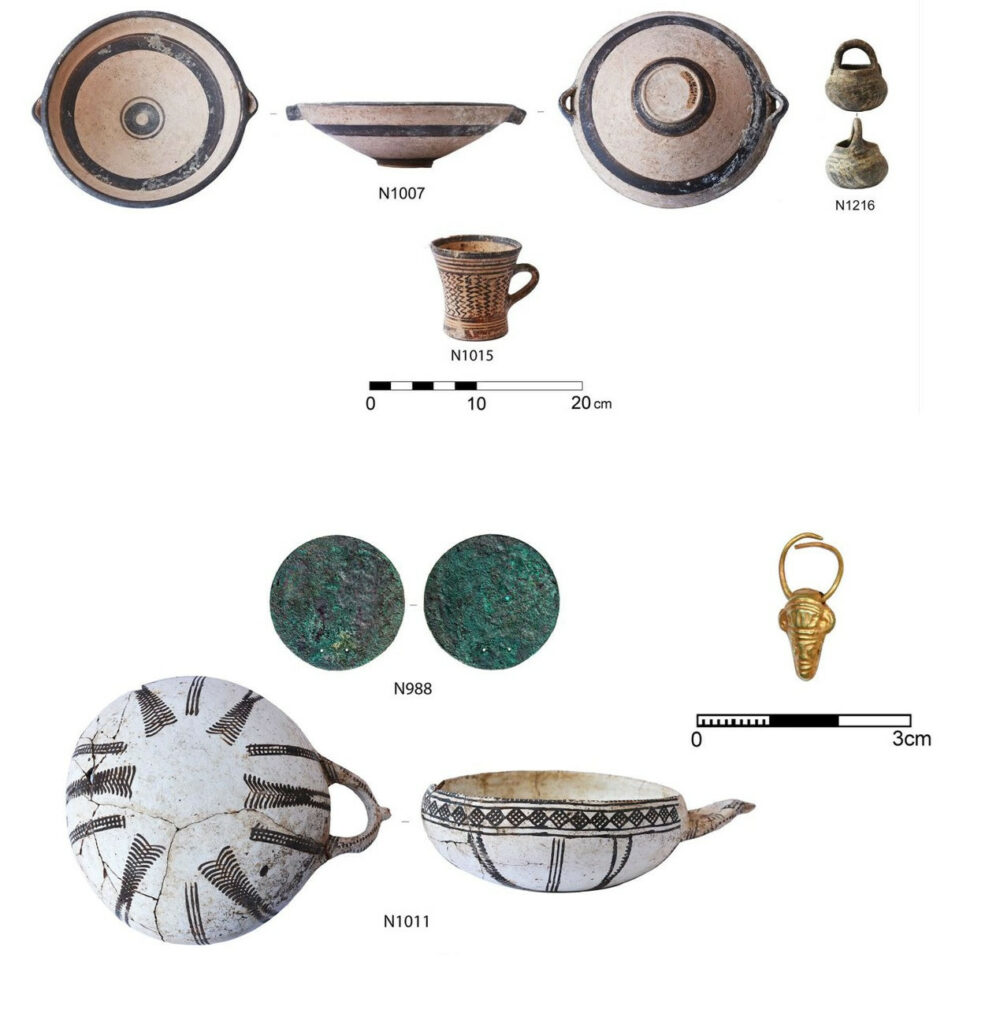Excavations at the ancient site of Hala Sultan Tekke, situated on the southeastern coast of Cyprus, have yielded an extraordinary discovery – a rare Aegean bronze mirror dating back approximately 3,300 years. The mirror, found within an intact tomb in the city’s extramural necropolis, sheds light on the diverse cultural influences and extensive trade networks that characterized the region during the Late Bronze Age.

Hala Sultan Tekke: A Thriving City of Commerce
Hala Sultan Tekke flourished between 1630 and 1150 BCE, strategically located along the Mediterranean Sea, facilitating a bustling trade and commerce hub. The recent excavations focused on the city’s necropolis, where archaeologists uncovered a series of untouched tombs, including Chamber Tomb XX, dated to around 1300 BCE.
A Treasure Trove of Cultural Influences
Chamber Tomb XX contained the remains of four individuals out of a total of 17, accompanied by an impressive collection of 264 complete objects. These artifacts, ranging from everyday items to funerary offerings, showcased the diverse cultural influences present in the region during that time, including Mycenaean, Minoan, Canaanite, Egyptian, and Levantine cultures, highlighting the extensive trade networks and connections of the era.
The Rare Aegean Bronze Mirror

Among the treasures discovered within Tomb XX was the rare Aegean bronze mirror, measuring between 11.2 and 11.4 centimeters in diameter and weighing 156 grams. The mirror exhibits characteristics typical of mirrors produced in the Aegean during that period, particularly in Crete. The absence of preserved rivets or handles suggests they were likely crafted from perishable materials such as wood, ivory, or bone.
Symbolic Significance and Elite Engagement
The mirror’s presence within the funerary context indicates its importance as a personal item of symbolic value, potentially reflecting the aesthetic preferences and social status of its owner. While Aegean-type mirrors were relatively scarce on the island, their presence in Tomb XX underscores the elite’s engagement with distant cultures and the exchange dynamics that defined the Late Bronze Age.

This remarkable discovery at Hala Sultan Tekke aligns with previous findings, such as the presence of a similar mirror in Enkomi Tomb 66, further emphasizing the significance of this ancient city as a hub of cultural exchange during this fascinating period in history.

